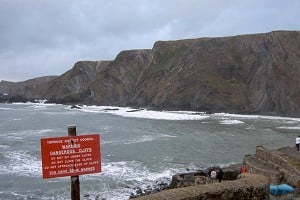
Many climbers travel to the South West in search of granite, but most head straight to the classic cliffs in Cornwall: Bosigran, Sennen and Chair Ladder. For those looking for something a little different, Lundy has a lot to offer, with a broad range of grades, countless classics, and a wild and remote feel. The journey across in the MS Oldenburgh (aka. Olden-buurrggghhhh after it's frequent vomit-enducing journeys) is unforgettable and only adds to the 'island experience', which really is quite unlike anything on the mainland.
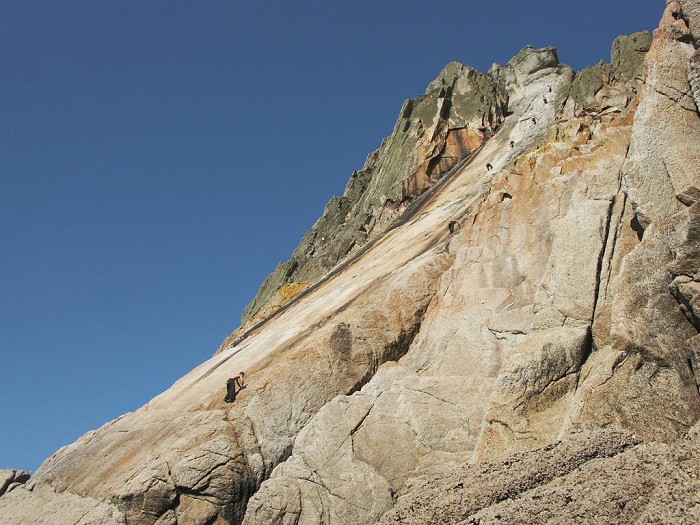
There's something about climbing on small islands that provides a truly memorable experience: the Orkney Isles and Outer Hebrides have it, so does Lundy. Maybe I'm over romanticising the whole thing, but there's something about boarding a boat that seems exciting - immediately it seems like the beginning of an adventure. I cannot profess to ever having felt the same about boarding a RyanAir or EasyJet flight… Boarding the Oldenburgh, as mentioned within the opening paragraph too, has something of a reputation, as in rough seas it has legendarily abilities for inducing sea sickness in even the calmest of waters.
Another Lundy legend, or perhaps myth in this case, is that you've got to book the trip several years in advance. This may well be the case if you're looking to book the Barn, but it is most certainly not the case with the island's camping, which can pretty much be booked on a last-minute basis. As such, if you're planning a trip to Devon/Cornwall and the forecast is looking good, it would definitely be worth considering a few days on the island. Once you've booked your accomodation you also have guaranteed seats on the Oldenburgh too, although you still need to buy them in advance.
Before I go further, here's a few tips for first-timers:
- Take all your climbing gear on the ferry as hand luggage. That way you'll be able to go out the same day as you arrive. If you put it in the hold there'll be a delay of several hours whilst they unload the ferry and deliver it to the place you are staying.
- Make sure your hold luggage is no more than 20kg. Whilst I've only heard of a single case where someone has been charged extra for going over the weight limit, that single case has always been at the back of my mind when packing for Lundy (plus, they were charged a lot!). Conversely, the staff didn't mind multiple bags per person as much as the literature suggested, so it's probably worth splitting weight between two more modestly sized bags than it is bringing one gigantic one.
- Take 100m of static and plenty of rope protectors. There are a great many routes that require a mandatory long abseil approach and others that are just made a lot easier (i.e. rather than a harrowing scramble you can just go in direct). However, as a result of this convenience there has to be an equal inconvenience to balance things out a bit - that leveller is Lundy's exceptionally rough rock, which without adequate rope protection will eat through static rope in a remarkably short space of time (more than one person has had their brand new 100m static come back from Lundy 10-15m shorter).
- Know your tides. Lundy has the second largest tidal range in the world, with a spring tide ranging up to 11m. In addition to this, Lundy's shores are frequently subject to sizeable swells, owing to it's rather exposed position to the Atlantic. As such, when the tide turns, it turns quickly. Being caught in the wrong place at the wrong time would have the potential to have very serious consequences (and with that in mind it is highly recommended you take prussiks, or a rope man, plus the knowledge of how to use one). In addition to this it is worth planning your trip around the tides, with a early afternoon low at the start of your trip being ideal.
- Take some pocket money and buy yourself a meal (and pint) at the Marisco Tavern. It's a great little pub and the heart of island activity. Setting up a tab at the start of a week is almost too easy a way to spend money, but what the hell - you're on holiday after all! (It's also worth mentioning that they do take card payments.)

The majority of Lundy's cliffs are western side of the island, hence it is a good venue for those that favour a late start. Those lacking patience will often find that the cliffs can have that residual coating of grease in the mornings, synonymous with so many British sea cliffs, but this tends to burn off shortly after the sun has hit. As a result it's good to know the exact aspect of the crag you're planning to visit, SW facing crags are more desirable for good mid-morning conditions and NW facing crags for the evenings. Wind also plays a huge part in drying things off, with a westerly being a particularly effective blow drier; however, with strong winds comes swell/spray that can engulf the crags, so it's a difficult thing to get in balance! It can also mean that Lundy can have some remarkably cold climbing conditions, even in the middle of summer, so remember to pack a warm jacket.
In light of the ramblings above, I would highly recommend that you sit back, relax and get into the swing of island life throughout the mornings in particular. There's no point in getting out before 10am, so read a book, visit the island's museum, take a walk to the lighthouse, or sign up to one of the activities run by the island's wardens - there's plenty to do (for a full list visit the Lundy Island Activity Page).
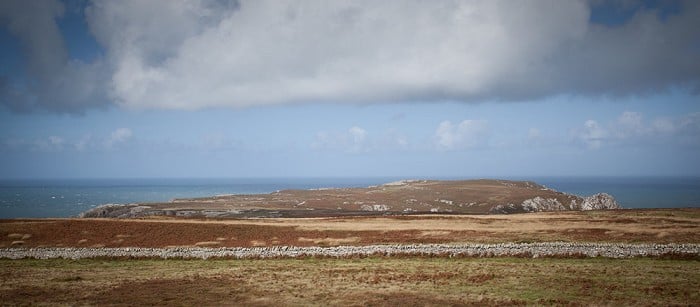
Another major factor is tide, as Lundy has a whopping 11m tidal range - something that would cover most gritstone outcrops whole! With that in mind it's worth planning your trip around a midday or early afternoon low tide at the start of your trip, that way you'll coincide low tide with the sun coming round and hitting the cliffs. There's a handy Tide Times Information Page on the Climbers Club Website that is worth checking when booking a trip. It's also worth drawing up a list of some of the non-tidal options within your grade range, as there's no general summary of what is/isn't affected in the guidebook itself, but such a list is definitely a useful ace up the sleeve for days when tides aren't ideal or the swell is too large.
Here's a quick list:
Non-Tidal Options on Lundy
| Focal Buttress | Wolfman Jack Wall | Landing Craft Bay |
| Egyptian Slabs | Beaufort Buttress | Grand Falls Zawn |
| Parthenos | Threequarter Buttress | The Diamond |
| Arch Zawn (Seaward Face) | Deep Zawn | Beef Buttress |
n.b. in high seas, any of the above could easily become tidal - as such be careful, use your judgement, and build a proper belay at the base of your route!
On the note of swell, without wishing to strike fear into the hearts of any would-be visitor, I personally have never seen anything like the seas you get on Lundy. Maybe I've always picked a poor time, or a particularly rough week, but the swell constantly seems to be surging in from the Atlantic. Add into the mix the effect that immense 11m swing from high to low and you've got yourself a force to be reckoned with. Being caught out in the wrong place at the wrong time could have quite serious consequences. As such, Lundy is undoubtedly a place for a competent and adventurous climber. It is not convenience cragging! In fact, this is the only criticism I have ever heard of Lundy - as there's frequently a lot of judgement (aka. faff) involved for what would otherwise be a very straightforward 1-3 pitch route on the mainland. Still, another aspect of the island's charm: it's certainly not forgettable!!
Must Do's
- Diff: Seal Slab (D)
- HS: The Devil's Slide (HS 4a), Horseman's Route (HS 4b),Integrity (HS 4b)
- VS: Albion (VS 4c), Diamond Solitaire (VS 4c), Shamrock (VS 4c), Eclipse (VS 4b)
- HVS: Double Diamond (HVS 5b), American Beauty (HVS 5a), Immaculate Slab (HVS 5a), Formula One (HVS 5a)
- E1: Satan's Slip (E1 5a), Fear of Faust (E1 5a),The Indy 500 (E1 5b), The Fifth Appendage (E1 5b), Headline (E1 5b)
- E2: Redspeed (E2 5c), Quatermass (E2 5c), Destiny (E2 5c), Venus Flytrap (E2 5c), Stop Press (E2 5c)
- E3: The Great Divide (E3 5b), Wolfman Jack (E3 5c), The Promised Land (E3 6a), Ice (E3 6a), Immaculate Misconception (E3 6a)
- E4: Diamond Life (E4 6a), Mal de Mer (E4 6a), Cithaeron (E4 6a), Golden Gate (E4 6a)
- E5: Wild Heart (E5 6a), The Cullinan (E5 6a), Olympica (E5 6a), Antiworlds (E5 6a), Supernova (E5 6b), Supercharged (E5 6a)
- E6: Watching the Ocean (E6 6a), Ex-Cathedra (E6 6a), The Price of Admission (E6 6b)
The rock on Lundy varies massively, with cliffs such as the Devil's Slide, the Flying Buttress, and the Diamond representing some of the finest quality rock in the country, both in terms of the grandeur of the features and the grain/texture of the indivudal holds. Sheer walls, immaculate slabs, incut edges, and soaring crack climbs - the island has a lot of diversity when it comes to climbing style; however, there is a darker side, as several of the island's more fragile cliffs have succumbed to rockfall in recent years: Araucaria (E6 6c), Solaris (E4 6a), Controlled Burning (E4 5c), and Formula One (HVS 5a) being four particular examples of 3 star routes that have suffered in recent years (although the latter is still possible via a traverse out right into Indy 100).
The final word on Lundy must go to the Marisco Tavern, which really is the beating heart of the island's social life. They serve good beer, good food, and a nice place to relax when the weather is bad (or good for that matter!). Their ban of electronic devices is admirable too, as the internet, mobile phones, and the day-to-day trappings of 21st century society, are very much things that people go to Lundy to get away from. Talking to people, as opposed to texting people; back to basics.
And that's Lundy...
Logistics
When to Go
The best time of year to visit Lundy is undoubtedly after the bird nesting restrictions have finished (to 15th September with most restrictions being lifted on the 14th of August), as all of the crags are accessible. That said, it is still possible to have a good trip within the restricted period, it's just that you'll probably wish to come back again to sample the rest of what is on offer (not all a bad thing).
How to Get There
99% of climbers will get to Lundy using the MS Oldenburgh, which sails from Ilfracombe or Bideford depending on the tide (timetable here). As suggested within the opening paragraph it's a pretty choppy ride, so if the sea is looking rough get yourself some travel sickness tablets in order to prevent an impromptu vom-session en-route to the island. For the somewhat more flush 1% there is the option of a helicopter ride, which leaves from Hartland Point. Alternatively, for the .001% keen enough and skilled enough there's always the option of getting there by kayak, although there is a £12 landing fee upon arrival.
Accommodation Advertise here
No Premier Listings found in this area
The most popular options amongst climbers are the Campsite and the Barn. The former has the benefit of greater availability, the latter has the benefit that it is made of granite as opposed to nylon (and also very competitively priced).
Other more flush options are listed on the Landmark Trust's Website.
Outdoor Shops Advertise here
No Premier Listings found in this area
There is a single shop on the island that should serve most provisions required for a week's stay; however, it is - perhaps unsurprisingly - quite expensive owing to the fact that all produce has to be brought over from the mainland. As such, if you're over for a week it would be worth bringing over your own supplies.
Food
There is only one option on the island, besides cooking yourself, and that is the Marisco Tavern - the island's pub. They serve food all day (check times on board) including breakfast, lunch, and dinner - plus a few mean desserts. Considering its all come from the mainland is is very reasonably priced and the portions are good enough to fill you up after a busy day's climbing.
Guidebooks
Whilst the island is featured in Pat Littlejohn's selective South West Climbs, if you're there for a week you will undoubtedly want Paul Harrison's fantastic definitive guide. It's a stunning publication and - to the guidebook fanatic - will provide hours of interest.
Other Activities
Explore the island! The Old Light is well worth a visit, as is the Museum. For more ideas visit the Landmark Trust's Activities and things to do page.
Instructor/Guides Advertise here
No Premier Listings found in this area
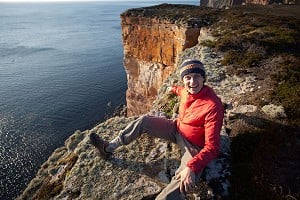
Rob Greenwood is the Advertising Manager at UKClimbing.com.
Aside from sport/trad climbing, he's dabbled with alpine climbing, Scottish winter, and Himalayan climbing; however he still maintains that Pembroke and the Scottish Islands are still the best places to climb on earth. After this recent trip, Lundy may just make it onto that list too.
He keeps an occasional blog about his adventures here: Rob Greenwood Climbing
- DESTINATION GUIDE: Bridging Two Worlds: The Unlikely Connection Between Horses and Climbing 1 Apr
- PHOTOGRAPHY: UKC/UKH Photography Awards 2023 - Winners 15 Mar
- PHOTOGRAPHY: The North Face & Ellis Brigham Photography Awards 2023 - Category Finalists 16 Feb
- GROUP TEST: Performance Headtorches - Petzl Nao RL, Silva FREE and Black Diamond Distance 1500 2 Feb
- REVIEW: The North Face FUTUREFLEECE Hooded Jacket 24 Jan
- ARTICLE: The Role (and Reprisal) of the New Routes Book 19 Dec, 2023
- REVIEW: Montane Phase Nano - The Ultimate Running Shell? 17 Nov, 2023
- REVIEW: Patagonia Triolet Jacket - PFC-Free, and Built to Take Abuse 3 Nov, 2023
- Sustainable Gear: The Evolution of Gore Tex - ePTFE, ePE and PFC-free DWR Treatments 1 Nov, 2023
- REVIEW: Scarpa Generator and Generator Mid - The Ultimate Trad Shoe? 5 Sep, 2023



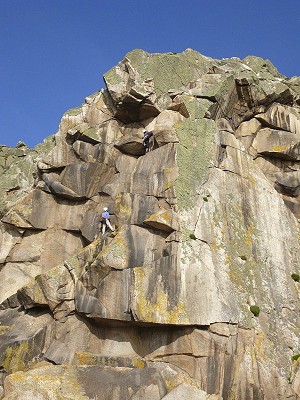
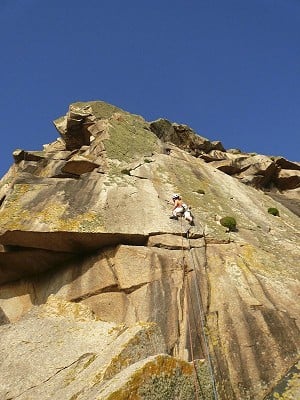
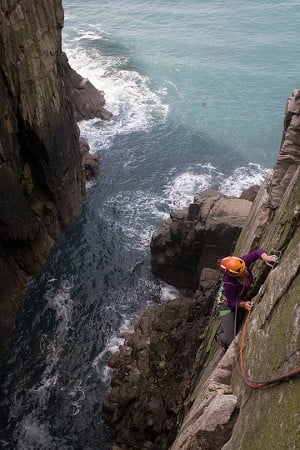
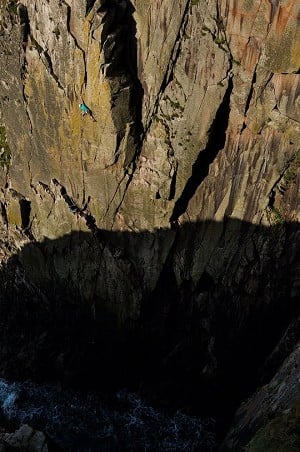
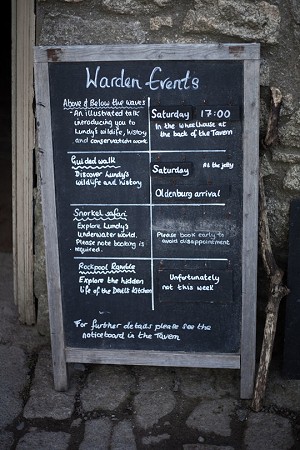
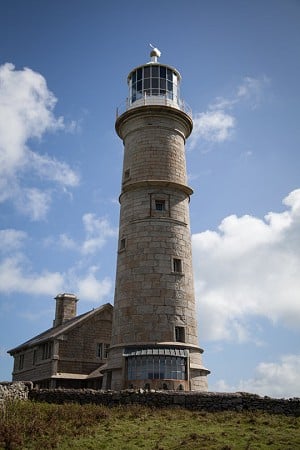
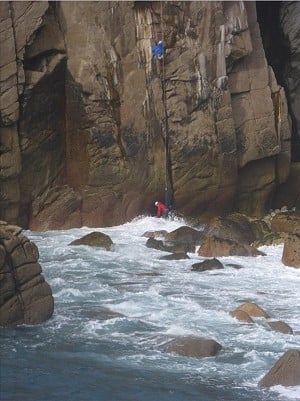
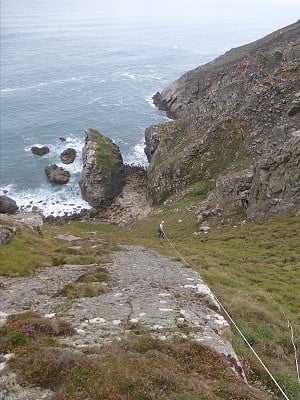
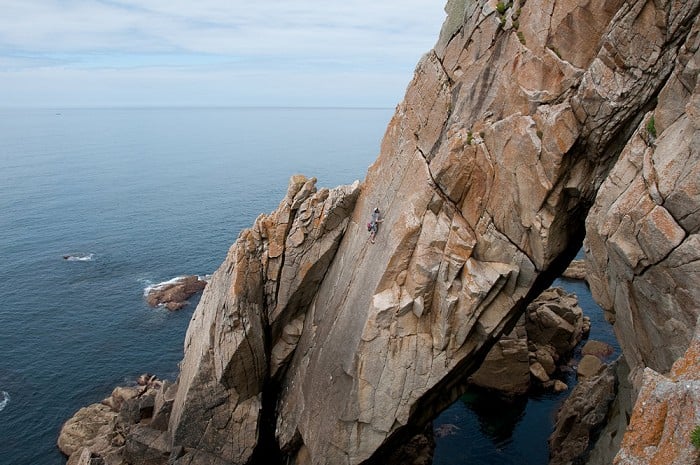
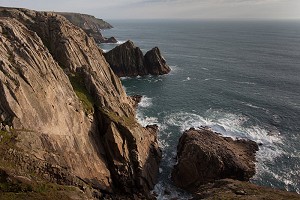
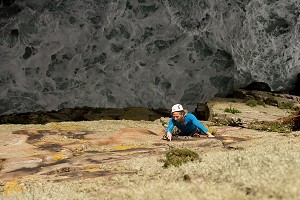
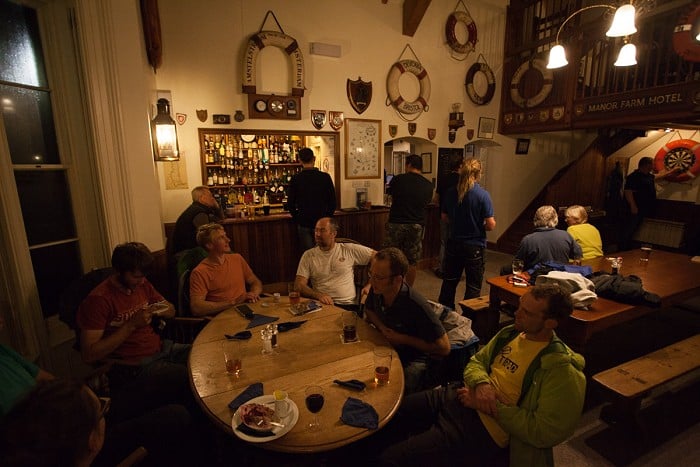
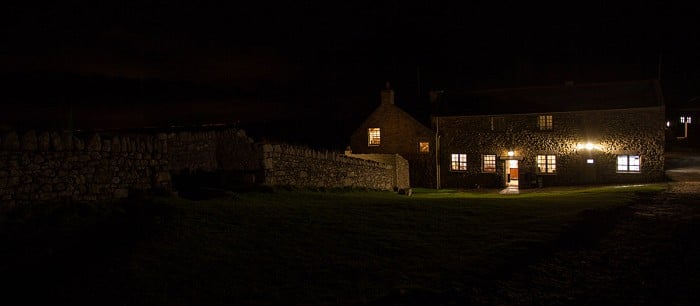
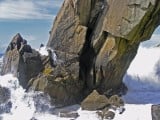



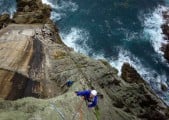


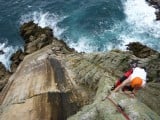

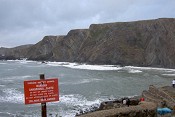
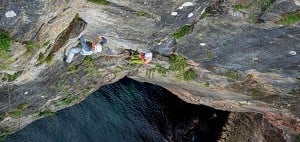

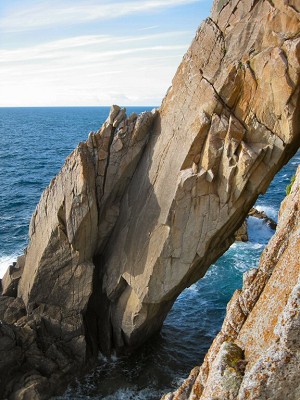
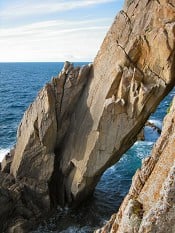



Comments